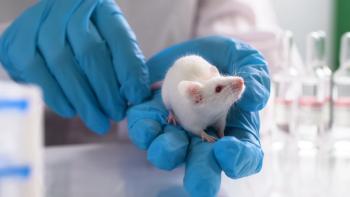
UC-Davis forms International Animal Welfare Institute
DAVIS, CALIF. - As public perception of animal welfare has changed, the need for education has increased, which is why the University of California-Davis School of Veterinary Medicine formed the International Animal Welfare Training Institute.
DAVIS, CALIF. — As public perception of animal welfare has changed, the need for education has increased, which is why the University of California-Davis School of Veterinary Medicine formed the International Animal Welfare Training Institute.
Its goal is to develop science-based solutions to animal-welfare issues, and to train everyone involved with animals at each stage of the animals' lives — producers, transporters, employees, veterinarians and others, according to Lynn Narlesky, spokeswoman for the veterinary college.
So far, two meetings have been held, both dealing with food animals. The most recent focused on the need for more science-based information on improving welfare of livestock. Several existing programs and potential research projects were outlined, including:
- Measurement of animal stress and pain
- Length of time of animal transport and transport conditions
- Optimal training methods for producers and animal handlers
- Bridging gaps in implementation of welfare strategies
- On-farm assessments and welfare audits
- Providing the most humane end of life for agricultural animals, appropriate techniques, and training in methods approved by the American Veterinary Medical Association
- Costs of welfare practices
- Roles of producers, animal health technicians and employees
- Demonstrating and communicating welfare successes
- Tapping outreach opportunities; for example, at auction sites
The institute also plans to examine equine and companion-animal welfare, including emergency preparedness and response.
The need for resources like the institute has increased as public perception of animal welfare has changed, says Gail C. Golab, PhD, DVM, MACVSc and director of the American Veterinary Medical Association's Animal Welfare Division.
"Since the 1950s, the public's perception of what constitutes good animal care has changed dramatically," says Golab.
"It used to be that people's primary direct contact with animals was in the context of food, fiber, or work (e.g., on farms). Currently their primary direct contact with animals is the pet in their homes. This means they tend to extend their ideas about how they should care for their pets to the care of all types of animals, whether or not such an extension is appropriate (and often, with species differences, it's not).
"In addition to urbanization, as family circles grow smaller, sources of support also grow smaller and the family pet may step in to fill that role. Disposable incomes have also increased for many people over that same period. That means they have more resources to provide for the care of their pets."
The need for education on this topic is huge, Golab continues.
"Fundamentally, people need to understand that when you make decisions about how animals are reared and cared for, there are almost always trade-offs," she says.
"Often those trade-offs are between meeting animals' physical and psychological needs."
Giving an animal more space to socialize may improve psychological needs, but it also means the animal is more susceptible to injury from aggressive animals or that disease control may be negatively impacted.
"The bottom line is that animal-welfare decisions need to be considered and made within the context of the entire animal-care system — not piecemealed," Golab says. "Otherwise you simply end up trading one set of welfare concerns for another."
Institute faculty and Dean Bennie Osburn met with the California Department of Food and Agriculture (CDFA) to discuss ways the school could participate in the California Animal Response Emergency Systems (CARES) administered by CDFA. CARES coordinates response efforts for animals during disasters.
And CDFA is interested in having the school take a lead role in the organization and training of rescue personnel and volunteers for animals in disaster or accident situations, according to Narlesky.
Professor John Madigan, DVM, and Tracey Stevens-Martin are leading the initiative, and Carolyn Stull, Veterinary Medicine Extension, heads the livestock segment of animal-welfare improvements.
Newsletter
From exam room tips to practice management insights, get trusted veterinary news delivered straight to your inbox—subscribe to dvm360.






